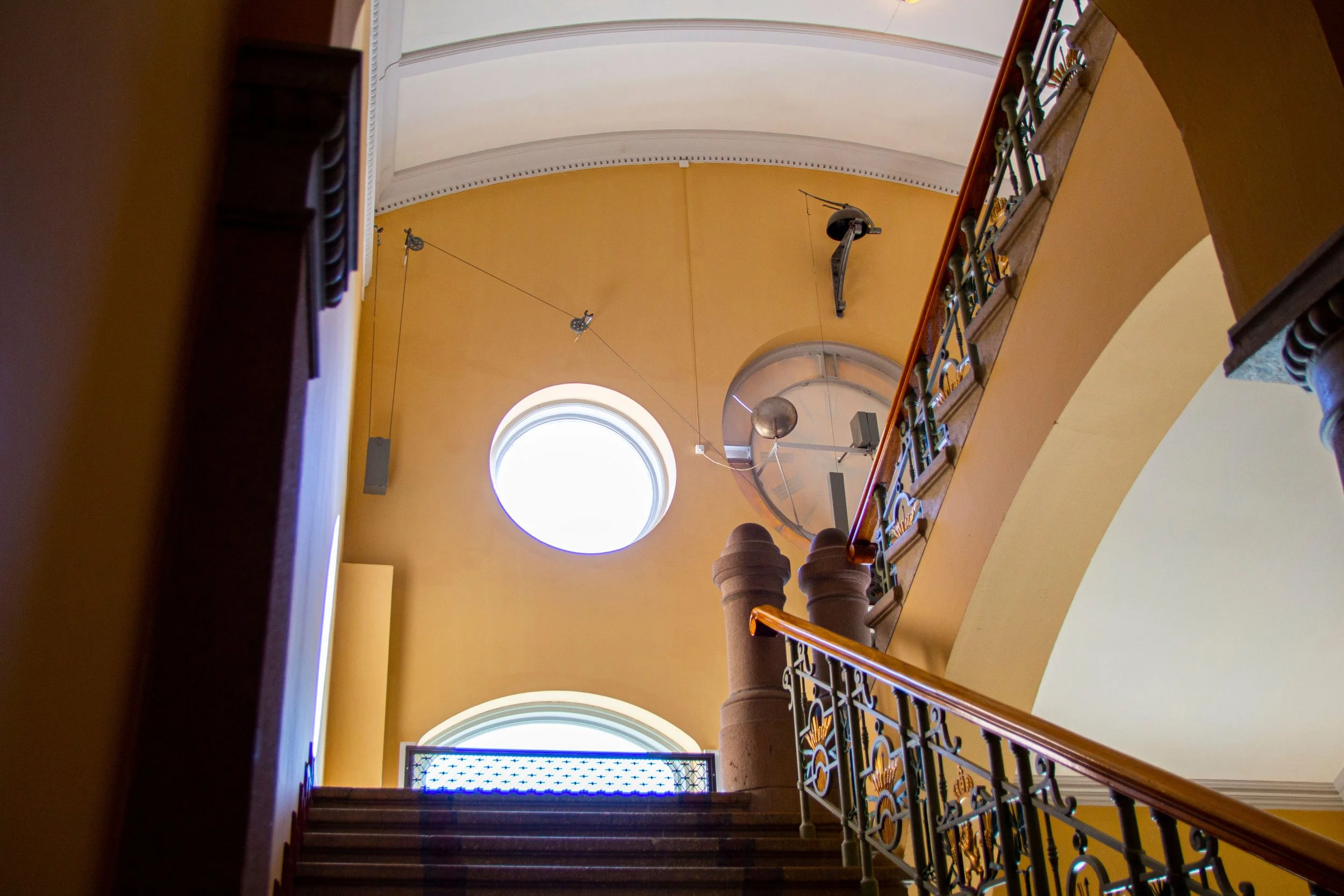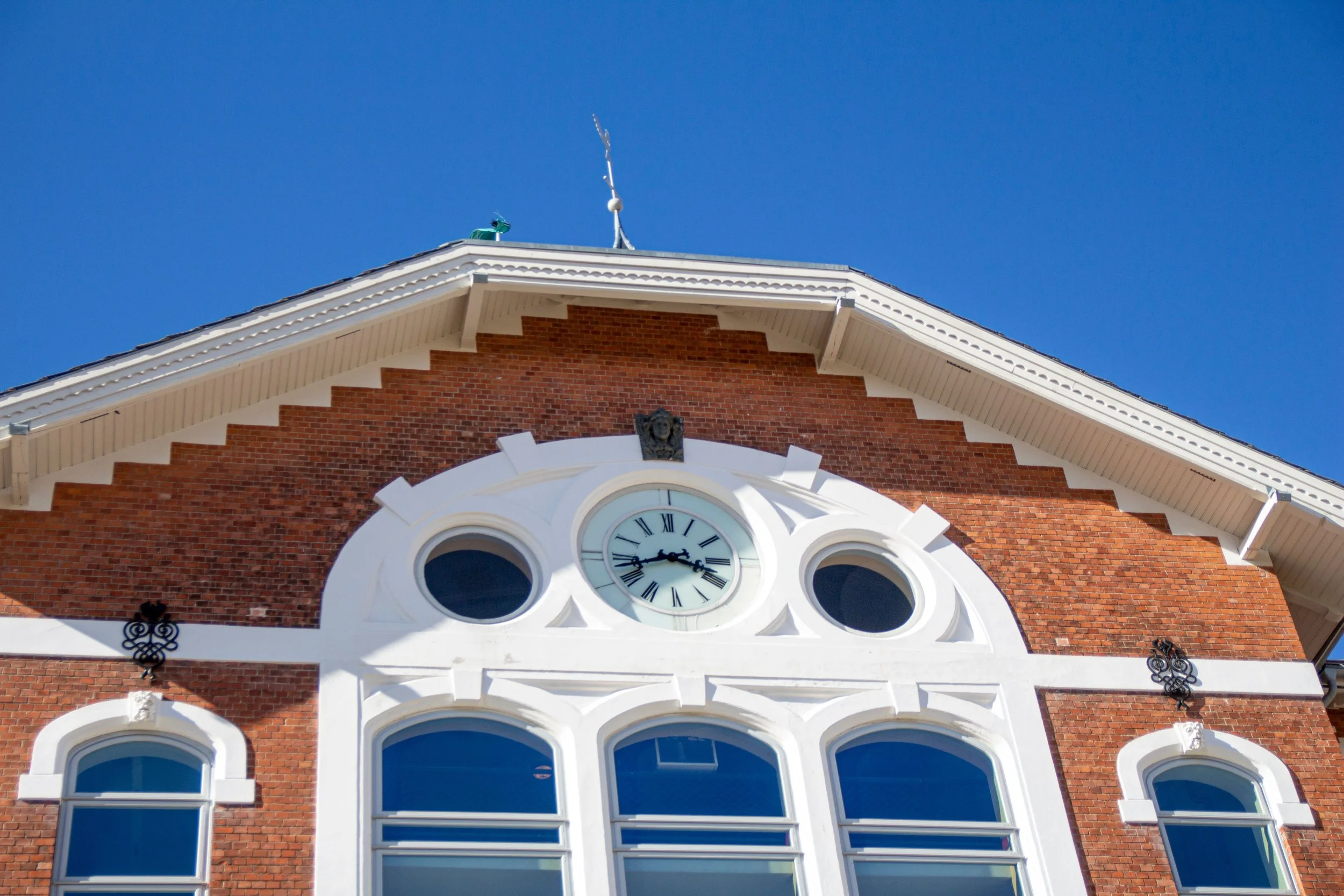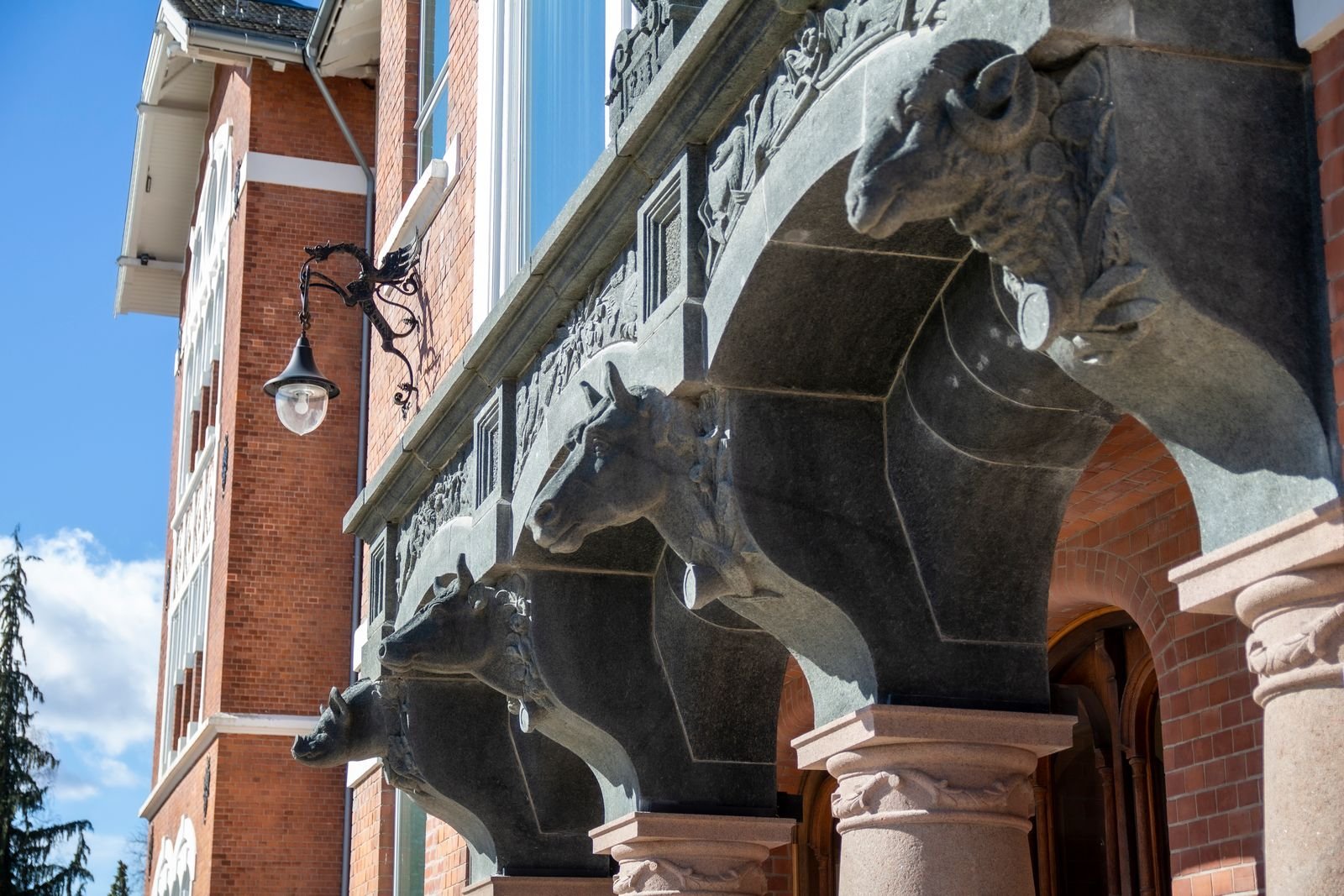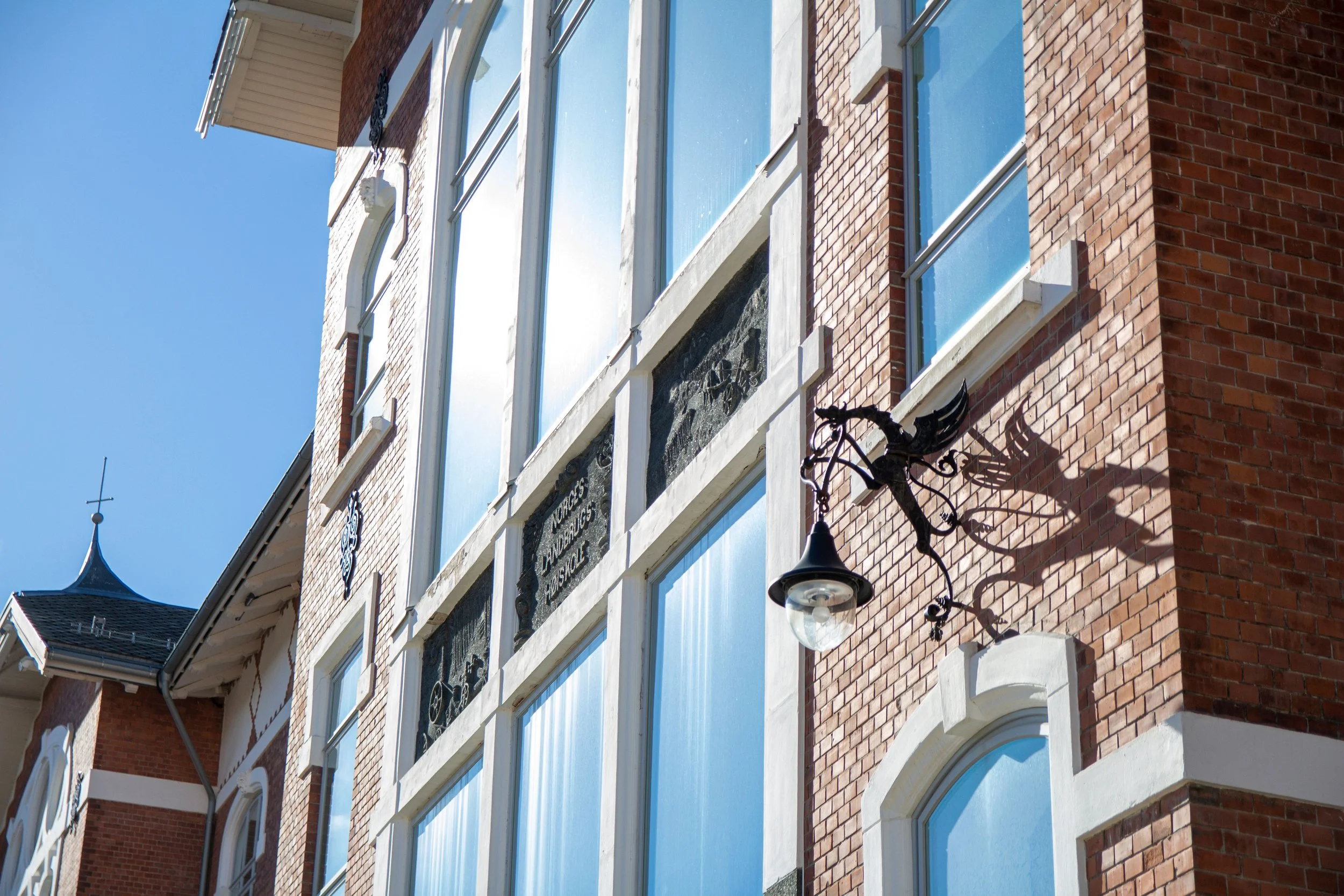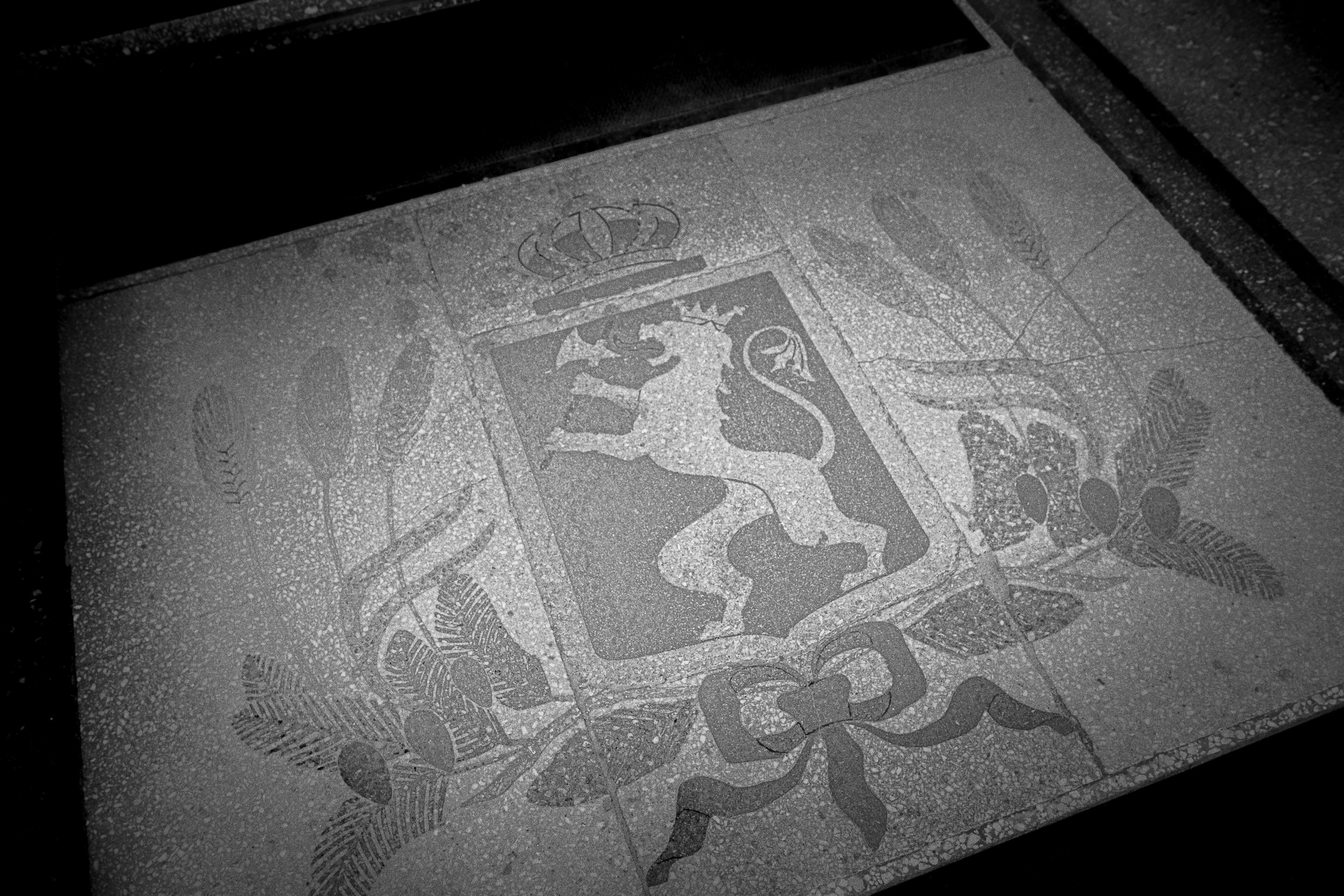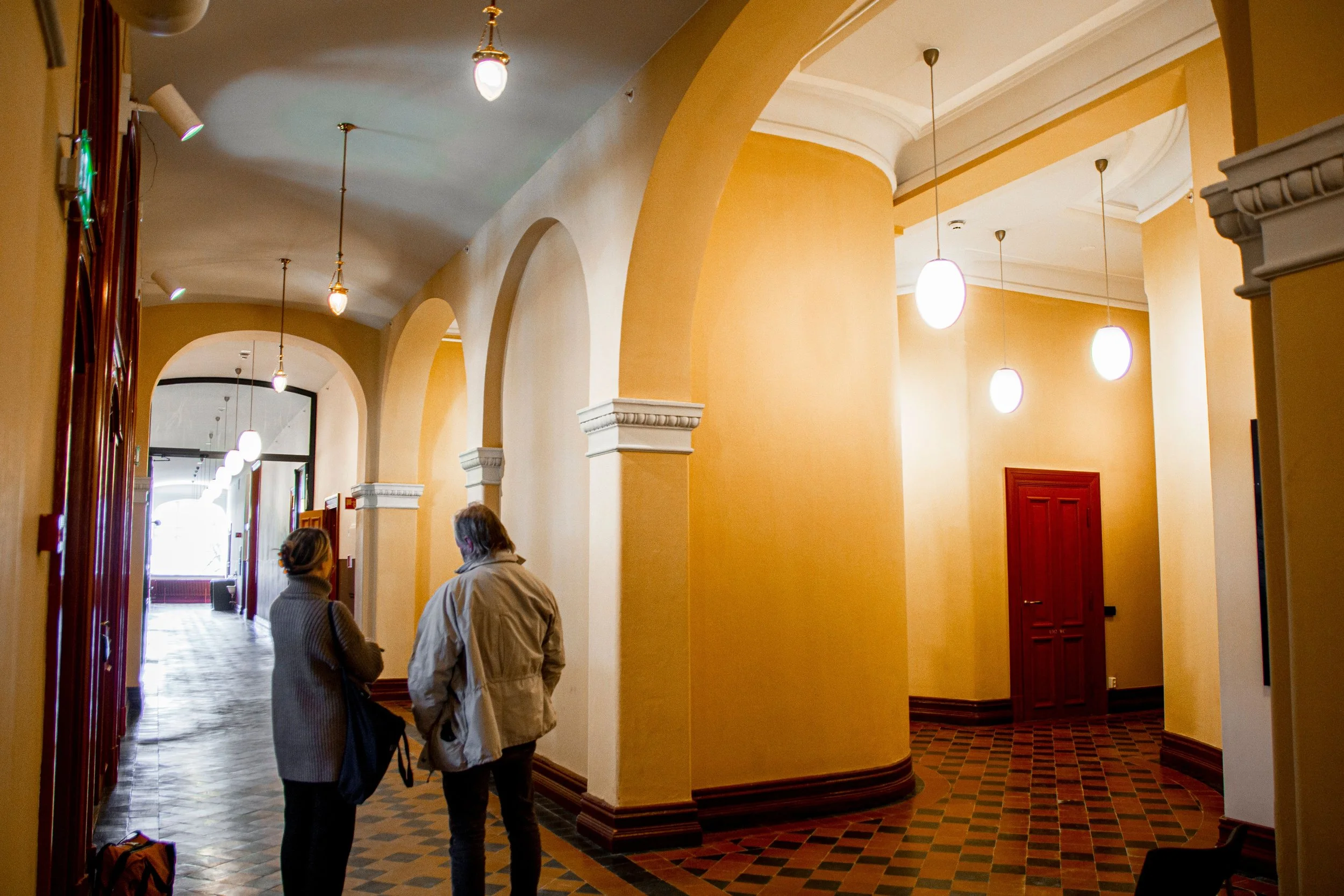A Voyage of Discovery with Håvard Steinsholt
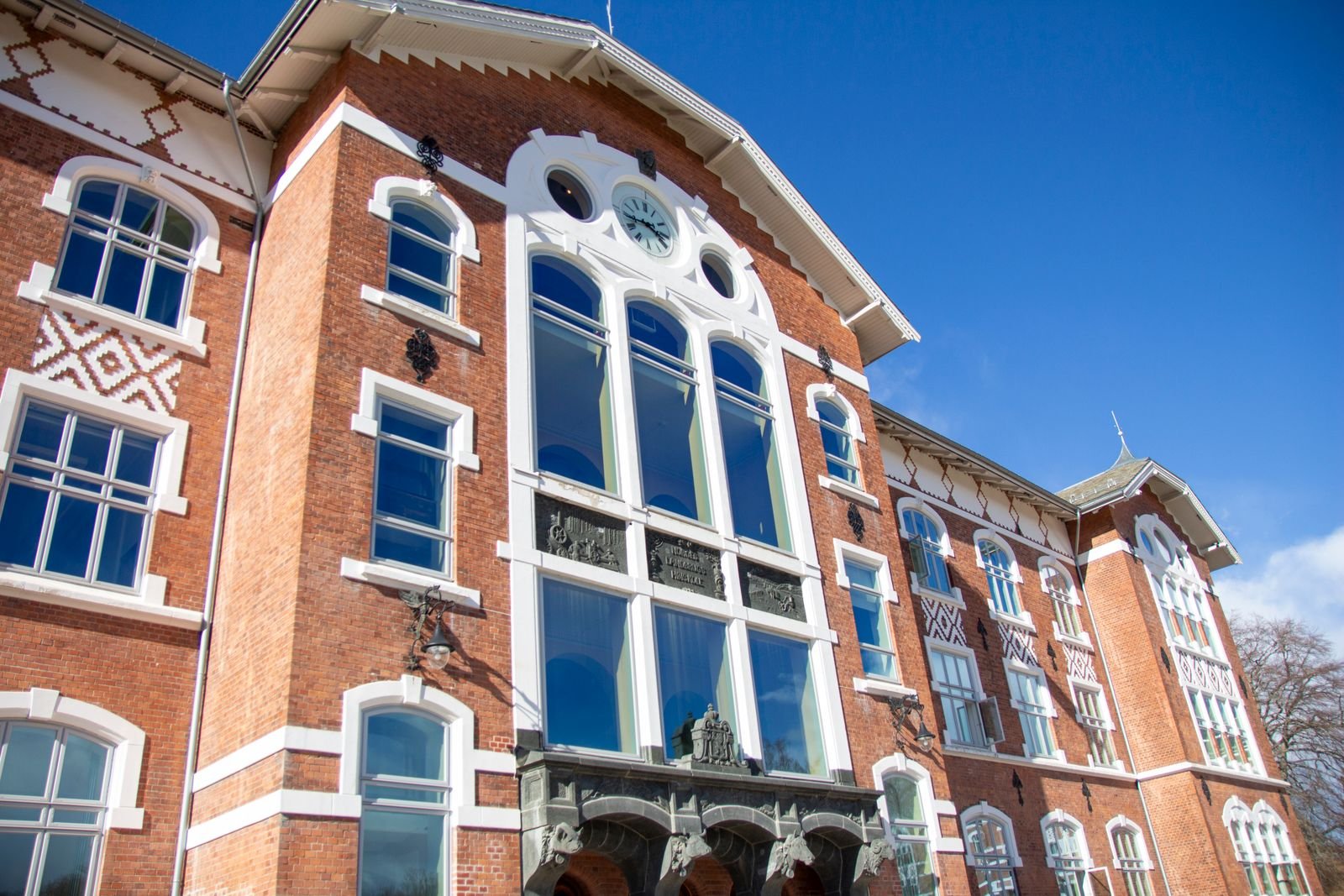
A Voyage of Discovery with Håvard Steinsholt
The Clock Building at campus has its own history, but what do we really know about it? Håvard Steinsholt is one of the few who can tell us what happened here 100 years ago. Join us on this voyage of discovery!
Journalist: Silje Bie Helgesen
Translator: Sofie Palmstrøm
Photographer: Synne Louise Stromme
Ole Sverre’s Castle Building
In 1854, large properties in Ås were bought, as an agricultural school was to be built here. Architect Peter Høier Holtermann drew three buildings around one yard; the educational building Tivoli, Cirkus and the Economy Building, were fully constructed in 1859. Yet it wasn’t until 1895, when the Economy Building burnt to the ground, that the campus as we know it took form. Now, the Clock building was to be built, and with architect Ole Sverre in front, all of campus was transformed.
The Clock Building was completely finished in its art nouveau style in 1901 and was to represent academia in one building.
“He wanted the building to be a logo for the university”, Steinsholt says. Ole Sverre drew the buildings with clear distinctions of the storeys and windows. He marked them with a pronounced white wall against the darker brick on the rest of the façade.
Pallas Athene in Ås
The columns at the entrance stretching further up towards the window is inspired by Greek architecture. Many may not be aware that Pallas Athene herself is hanging above the big clock. She was the Greek goddess of wisdom and strategy and looks down upon the students walking to their lectures.
“The students should stop and greet her”, Steinsholt says. Maybe she will provide good understanding of the subjects.
He also tells that a brand-new discovery that few people know about, links the goddess of wisdom to the Clock Building’s architecture. Steinsholt thinks that this is not a coincidence. “The goddess of wisdom is also represented by the outer measurements of the building. The foundation of the Clock Building has the same dimensions as the Pallas Athene temple called Parthenon, located at the Acropolis in Athens. They have the exact same measurements, 70 times 31”, Steinsholt says.
He thinks that these measurements are completely intentional, and explains that architects like Ole Sverre carried this knowledge by heart.
Encounters with the Past’s Concept of Future
Above the entrance there are several details meant to represent both old and new. The embossments show the future, with new agricultural tools. You can see a locomobile sawmill run by steam, and a horse powered reaper. “Today one might think that it’s funny with motives of old tools, but this was all super modern in 1901”, he laughs.
The Prettiest Sheep, Cow, Pig and Horse
Carved animal heads in stone hang above the entrance. The animal models were properly chosen through an exhibition competition.
“A big regional show was held at Ekebergsletta in Oslo, and the winners from the event became live models for the statues hanging here”, Steinsholt says. Each animal has a medal around its neck, serving as a reminder that the animals were winners.
A Political Demonstration in Architecture
Steinsholt explains that it’s important to remember that the building was built at a time on the precipice of war. In 1901, the Clock Building was built, and in 1905, the union with Sweden was dissolved. It therefore awoke great reactions when Oscar II’s Norwegian lion was placed on the ground right inside the doors, for everyone to walk over with dirty shoes.
“This was considered a political demonstration. The first thing the students do in the morning is to step on the Swedish king”, he says. The history therefore tells that there was put a heavy rug over the lion, until 1905.
Modern Buildings
From the get-go, two steam machines were run in the basement of the Clock building. This was the first electricity facility in Follo, and provided the building with self-made electricity.
“People would travel from afar just to see the lit building in the dark landscape at night”, he explains. He goes on to say that the stream machines were driven by peat from the university’s own bog. The big round column you meet in the Clock Building was part of this facility.
Mercury + Professors = True
They had problems with mercury running down the floors from the laboratories on the second floor. “The stereotypical professor is pretty forgetful and clumsy, and some people think that this is due to chemistry professors working in rooms with mercury in the walls and roofs”, he says.
The Women’s Demonstration
Even though the burning of peat provided both heat and electricity, not everyone were equally fond of this future oriented facility. The smoke coming from the big pipe on the Clock Building was black as coal and spread throughout the air in Ås. This made the finer ladies in Ås angry, because their white laundry was never white. One could simply not hang white clothes to dry outside.
“All ladies who could afford mink, got to be a member of the “mink club” in Ås. They were mostly the wives of professors and the upper class. They were furious”, Steinsholt explains.
They marched their way to the school and occupied the director’s office, with the director still inside. “The door was barricaded, and they proclaimed through the door crack that nobody was to exit before the professor committee stopped the peat burning for good”, he says
That same night there was an extraordinary meeting in the professor committee which managed the usage. That same night in 1917, it was decided that the peat burning was to end. From then on, the Clock building got their energy transferred from Skiseng.
The Clock and the Student Cap
The clock was also supposed to represent the future, as it only moves forward in time. “The clock has been ticking away throughout the entire history of the building. It has required minimal maintenance”, Håvard tells. The optimism for the future was a part of the big clock. More food was to be grown, new discoveries, new inventions, and more use of natural resources. Having the clock put up was no conflict-free process, as a building at the university square in Oslo was already named “The Clock Building”. “This was a part of an eternal conflict with the university in Oslo, who managed to keep the university in Ås from being called a university for 100 years. “There were lots of childish quarrel rounds”, he says.
He explains that, among other things, there were big disagreements when the Oslo students saw that Ås students wore a black student cap with a tassel on the 17th of May. The reason was that the students in Oslo looked down on the farmers in Ås and didn’t want to be compared with the agricultural school. The conflict about the student cap lasted for many years, all the way up to the ministry level. In 1924, a minister decided that the Ås students could wear the student cap, but without the tassel on top.


